According to the CDC, nearly 94 million adults (age 20+) living in the United States have high cholesterol. 94 million! High cholesterol can lead to increased risk for heart disease, heart attack and stroke. So what can you do to either lower your cholesterol or keep your cholesterol within the desired range? Well we’ve got you covered with the Ultimate Guide to Lowering Cholesterol by using the Mediterranean diet as a lifestyle guide.
In the information below, you’ll find facts about cholesterol, the different types and how they affect your body, dietary sources and practical changes you can make to improve your overall heart health.
What is Cholesterol
Cholesterol is a waxy substance that’s made in our body by the liver. It’s also found in some foods. It has many functions in the body, including building cells, making vitamins and hormones. It also helps keep cell walls flexible.
Our liver produces as much cholesterol as the body needs. The rest comes from the foods we eat. However, studies show that dietary cholesterol doesn’t have a huge influence on the total amount of cholesterol in our body. As a result, the American Heart Association and 2020-2025 Dietary Guidelines for Americans no longer have specific recommendation for limiting dietary cholesterol.
The issue with cholesterol is when you have too much of it, especially in the wrong places.
Interesting Tidbit – some food companies still advertise their products being “low in cholesterol” or “cholesterol free”, even though this doesn’t have much impact on a person’s total cholesterol levels.
2 Main Types of Cholesterol
There are two main types of cholesterol – Low Density Lipids (LDL) and High Density Lipids (HDL).
Since cholesterol doesn’t dissolve in water, it needs molecules called lipoproteins to move around the body. Lipoproteins also carry fat and fat soluble vitamins around the body as well.
LDLs (low density lipids) – gets deposited in the walls of blood vessels. Excess of this type of cholesterol leads to clogged arteries, stroke and heart attack. LDLs can also be damaged by free radicals through a process called oxidation. Oxidized LDLs are more harmful to heart health.
HDLs (high density lipids) – help carry unused cholesterol away from vessel walls and back to the liver. This reverse transport process helps prevent clogged arteries, stroke and heart attack.
Important Numbers to Know
Knowing the following numbers are a good indicator of your personal risk for heart disease…
- Total Cholesterol = the total cholesterol in your body, including LDL, HDL and Triglycerides
- Triglycerides = a type of fat in your blood that your body uses for energy. The combination of high levels of triglycerides with low HDL cholesterol or high LDL cholesterol levels can increase your risk for heart attack and stroke.
- LDL (“lousy” cholesterol)
- HDL (‘helpful” cholesterol)
According other CDC, these are what you should aim for when it comes to cholesterol numbers…

So What Raises Cholesterol?
Current research indicates that Saturated Fats and Trans Fats have more influence on non-desirable cholesterol levels that the total cholesterol value of foods.
This includes foods like red meat, dairy, and processed foods that contain partially hydrogenated oils like margarine, cookies, crackers and cakes.
What are Trans Fats?
A modified unsaturated fat that goes thru a process called hydrogenation. The end result is a trans fat that is not fully saturated, thereby called a “partially hydrogenated oil”.
Partially hydrogenated oils are solids are room temperatures (ie margarine and shortening). This makes them desirable to use in processed pastries, cookies, and spreads/dips. Food companies preferred using them because they made products more shelf stable.
They are handled a different way in the body but in a negative way. Trans fats can increase total cholesterol, increase LDL cholesterol and decrease HDL cholesterol. Not a good combination.
In January 2021, the FDA banned use of partially hydrogenated vegetable oils in commercial prepared foods. The WHO called for the global food supply to have an elimination of industrial produced trans fats by 2023.
Interesting Tidbit – trans fats have to be included on a food’s nutritional label. However, if a food has less than 1 gram of trans fats, they can round down and record as zero. Best practice is to read the ingredient label and look for “partially hydrogenated oil”…that means it has trans fats.
Guide to Lowering Cholesterol
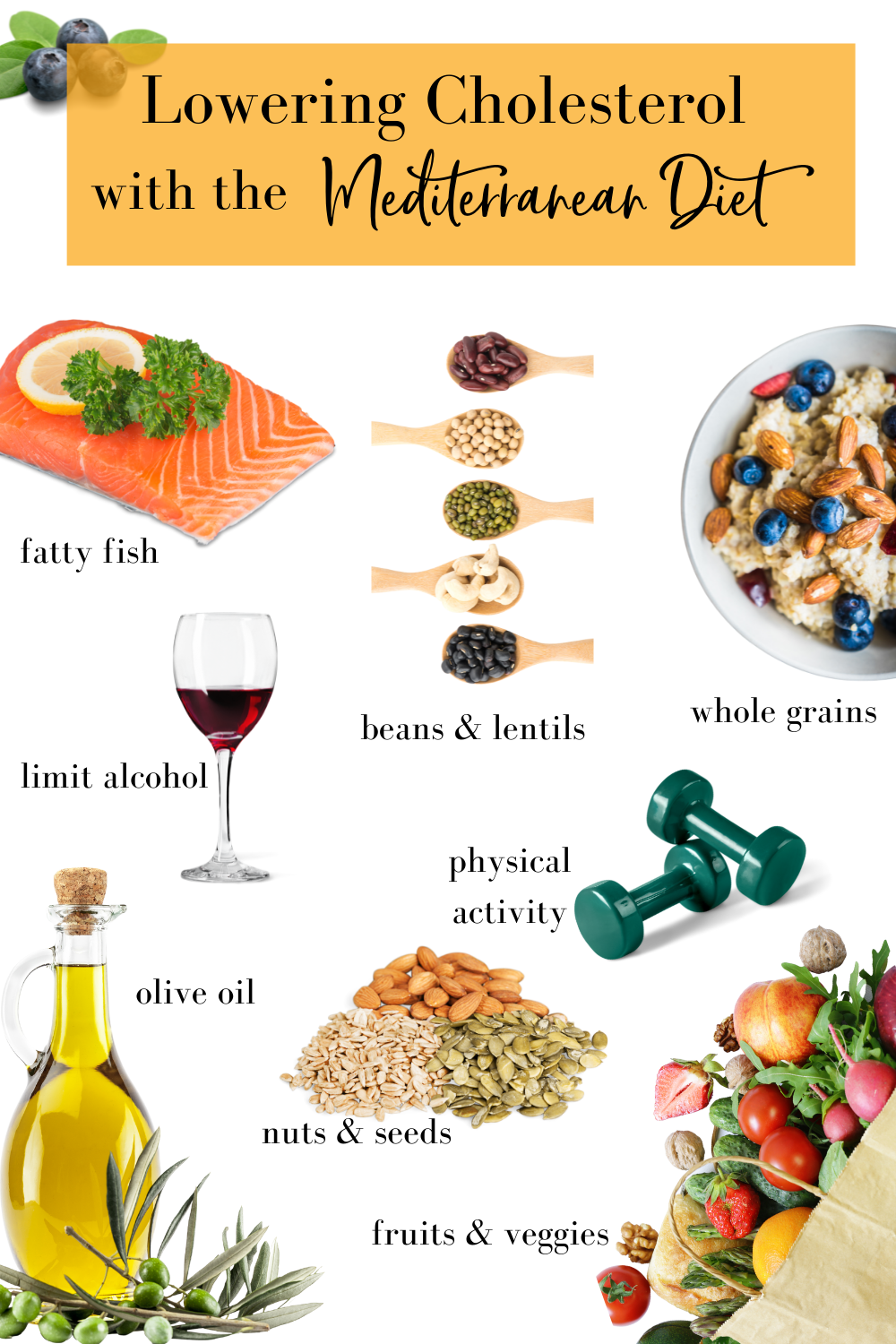
So how can you reduce your cholesterol? The short answer…by following a Mediterranean style diet.
Since the Mediterranean diet focuses on eating a diet rich in plant based foods like vegetables, fruits, whole grains, bean, nuts, legumes, seeds and olive oil, it’s no shock that it’s a great diet for lowering cholesterol levels and preventing risk of heart disease.
In summary, the foods to focus in incorporating to lower cholesterol include –
- fruits
- vegetables
- whole grains
- beans & lentils
- fatty fish
- nuts & seeds
- olive oil
- avocado
- herbs and spices
Top 2 Changes to Make
- Reduce Saturated Fats
- Recommended to keep saturated fats to less than 10% of calories per day
- Sources of saturated fat include red meat, cured meats like bacon/sausage/salami, butter, palm and coconut oil, cream, cheese, biscuits, cake
- Try to Eliminate Trans Fats
- Trans fats raise total cholesterol levels
- They have been banned by the FDA and WHO
- Sources of trans fats include margarine, non-dairy coffee creamers, store bought cakes, cookies, crackers and cakes, some microwave popcorn
Some Changes You Can Make
We are all about looking at things in a positive light so instead of focusing on what to remove from your diet, here’s a few things you can add to your diet in place of saturated and trans fats.
- Use olive oil whenever possible in place of butter. This is easy to do when it comes to sautéing veggies, using on fresh bread or even cooking scrambled eggs
- Learn to read labels, specifically the ingredient label. If a product says “partially hydrogenated oils” on the ingredient label, try to find a different brand that doesn’t
- Replace non-diary coffee creamers with actual milk
- Try swapping red meat with fish or chicken breast at least once a week
- If you have the ability, always opt for home made cookies, cakes and pastries instead of store bought. You can eliminate the need for shelf stable ingredients like shortening or other partially hydrogenated oils
- Olive oil is best when it comes to butter but if you use margarine, I would highly suggest switching to butter when needed over margarine
Diet Changes to Focus on Adding
The diet changes below coincide with the Mediterranean Diet Food Pyramid but also can help improve cholesterol either by reducing LDLs or increasing HDLs.
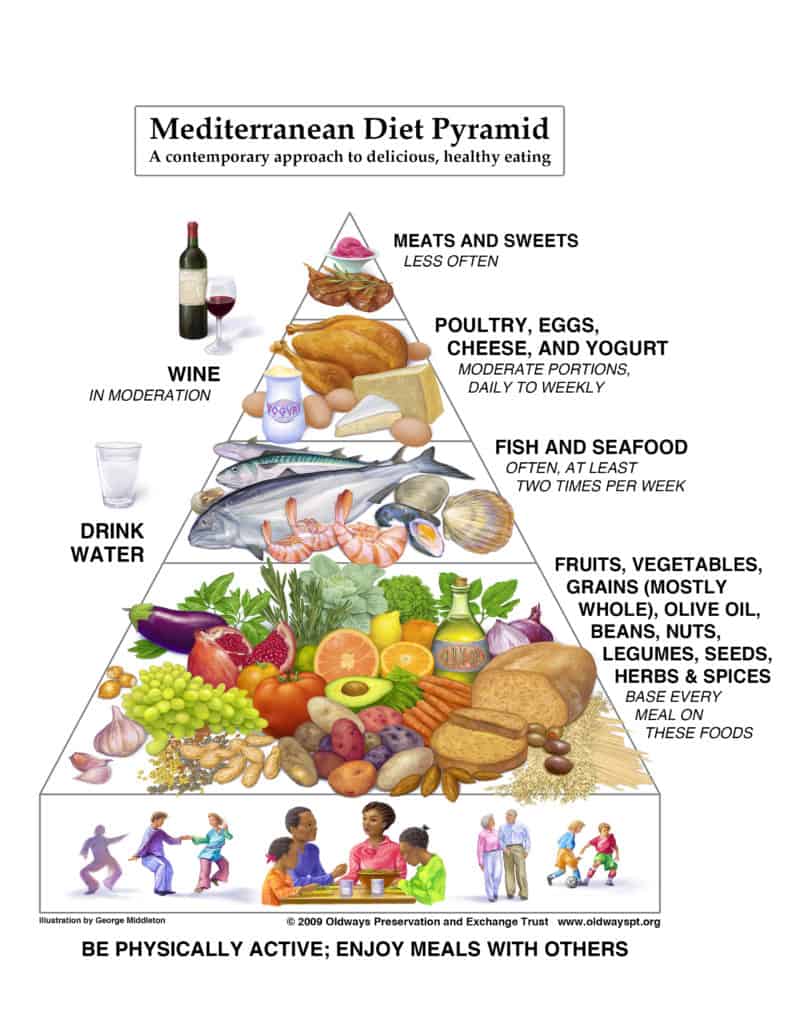
Don’t get overwhelmed and feel like you have to change everything at once. Change is hard. Small changes can yield big results but more importantly they can lead to healthy habits that you’ll keep forever.
Focus on increasing Monounsaturated and Polyunsaturated Fats
The good news when focusing on lowering cholesterol is that the goal is not to eliminate all fat from your diet.
The Domestic Dietitian
Fat is needed for many functions in the body but also adds a ton of flavor to food. The goal is simply to reduce saturated fats and replace with mono/polyunsaturated fats instead.
Monounsaturated fats helps reduce LDL (“lousy”) levels while increase HDL (“helpful”) levels of cholesterol. They can also reduce the oxidation of cholesterol. Remember that oxidized LDL cholesterol is even more harmful to heart health.
Sources of Monounsaturated Fats
- olive oil
- nuts
- avocado
- nut butters
- olives
- seeds (pumpkin, sunflower, sesame)
Polyunsaturated fats also help reduce LDL (“lousy”) cholesterol but can also reduce the risk of type 2 diabetes. They decrease blood glucose levels and fasting insulin levels, both of which are indicators of a decrease risk for type 2 diabetes.
Polyunsaturated fats can also contain Omega 3 fatty acids, which can have extra heart health benefits. Research has shown that Omega 3 Fatty Acids have the ability to –
- Promote healthy brain and eye development in children
- Help build muscle and tissue
- Reduce the possible risk of heart disease
Sources of Polyunsaturated Fats
- Fatty fish like salmon, mackerel, herring
- Walnuts
- Flaxseed
Eat More Fiber
Fiber is so underrated and most of us aren’t getting anywhere near our daily recommended amount. Check out this post for more detailed info on the power of fiber – Dietary Fiber, The #1 Thing Missing from Your Diet
Fiber, specifically soluble fiber, refers to a group of compounds found in plants. They dissolve in water but can’t be digested by humans. Not only can fiber help reduce the absorption of cholesterol into your bloodstream by removing it from the body, but fiber plays a HUGE role in gut health. The beneficial bacteria in your gut require fiber to grow and thrive. Many of these bacteria can reduce LDL (“lousy”) cholesterol as one of their main functions.
Best Sources of Dietary Fiber
In a nutshell…PLANTS!
- fruits (berries and skin on fruit like apples & pears are high)
- vegetables
- oats
- whole grains (quinoa, whole wheat bread and pasta, oatmeal)
- beans
- legumes/lentils
- nuts
- seeds
Examples Cholesterol Lowering Swaps
Olive Oil in place of other oils
Olive Oil in place of butter whenever possible (but if needed butter over margarine)
Milk in place of Non-dairy creamer
Hummus or Smashed Avocado in place of Mayo on Sandwiches
Olive oIl based dressings in place of creamy style dressings
Fish in place of Steak a few times a week
Ground Turkey or Combo of Ground Turkey with Mushrooms in place of Ground Beef in tacos, meatloaf, burgers
Chili with Beans in place of Chili with Beef
Ways to Add Cholesterol Lowering Foods to Meals
- Add berries and walnuts to cereal
- Combine sautéed spinach, tomato and mushrooms with scrambled eggs
- Instead of a ham and cheese sandwich on white bread, use whole wheat bread with hummus, mashed avocado, broccoli sprouts, arugula, roasted chicken instead
- Rather than just having a “bowl of salad greens”, try jazzing up that lettuce with kidney beans or precooked lentils, sunflower seeds, chopped fruit/berries (apples or strawberries are our favorites), olive oil based vinaigrette
Some of Our Favorite Cholesterol Lowering Recipes



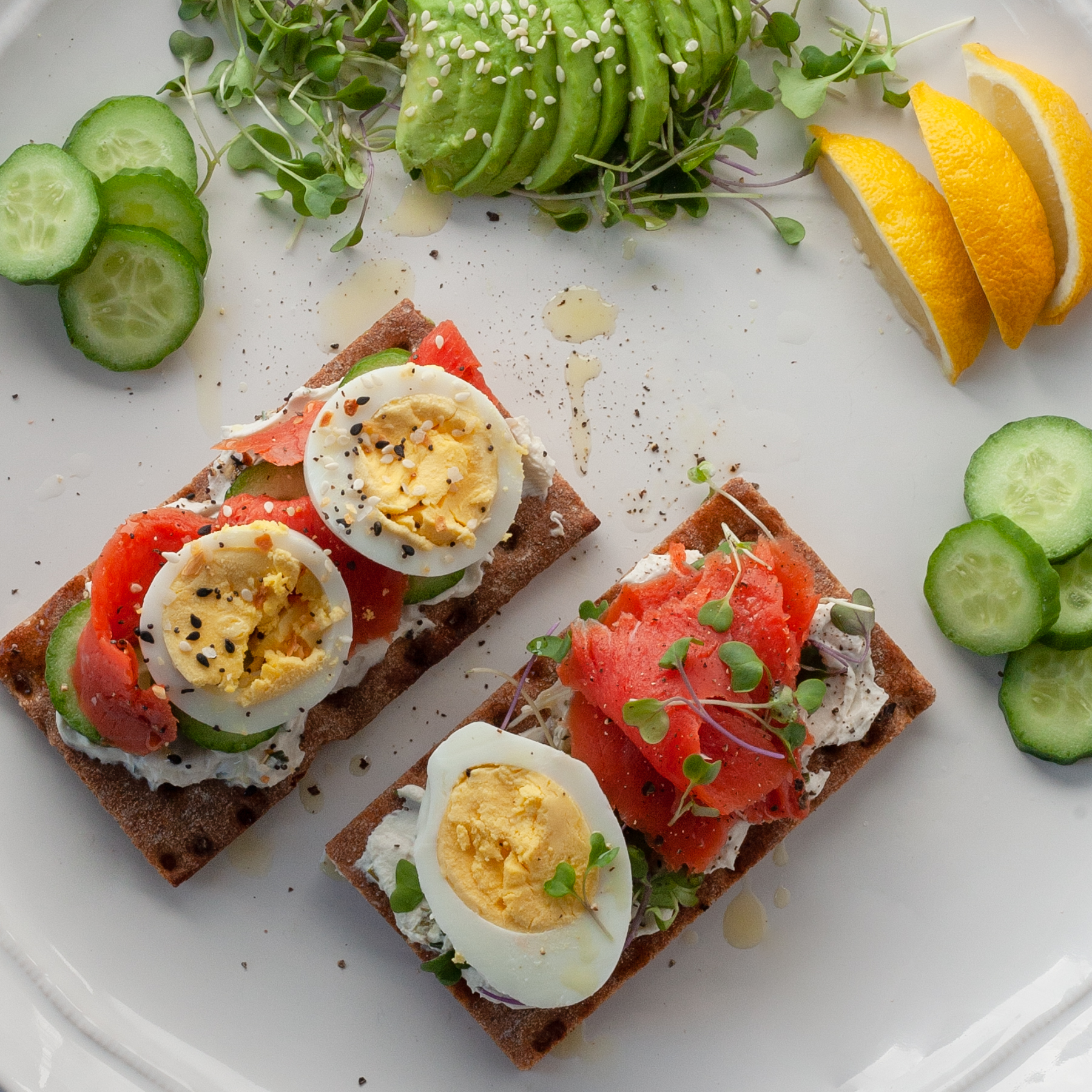
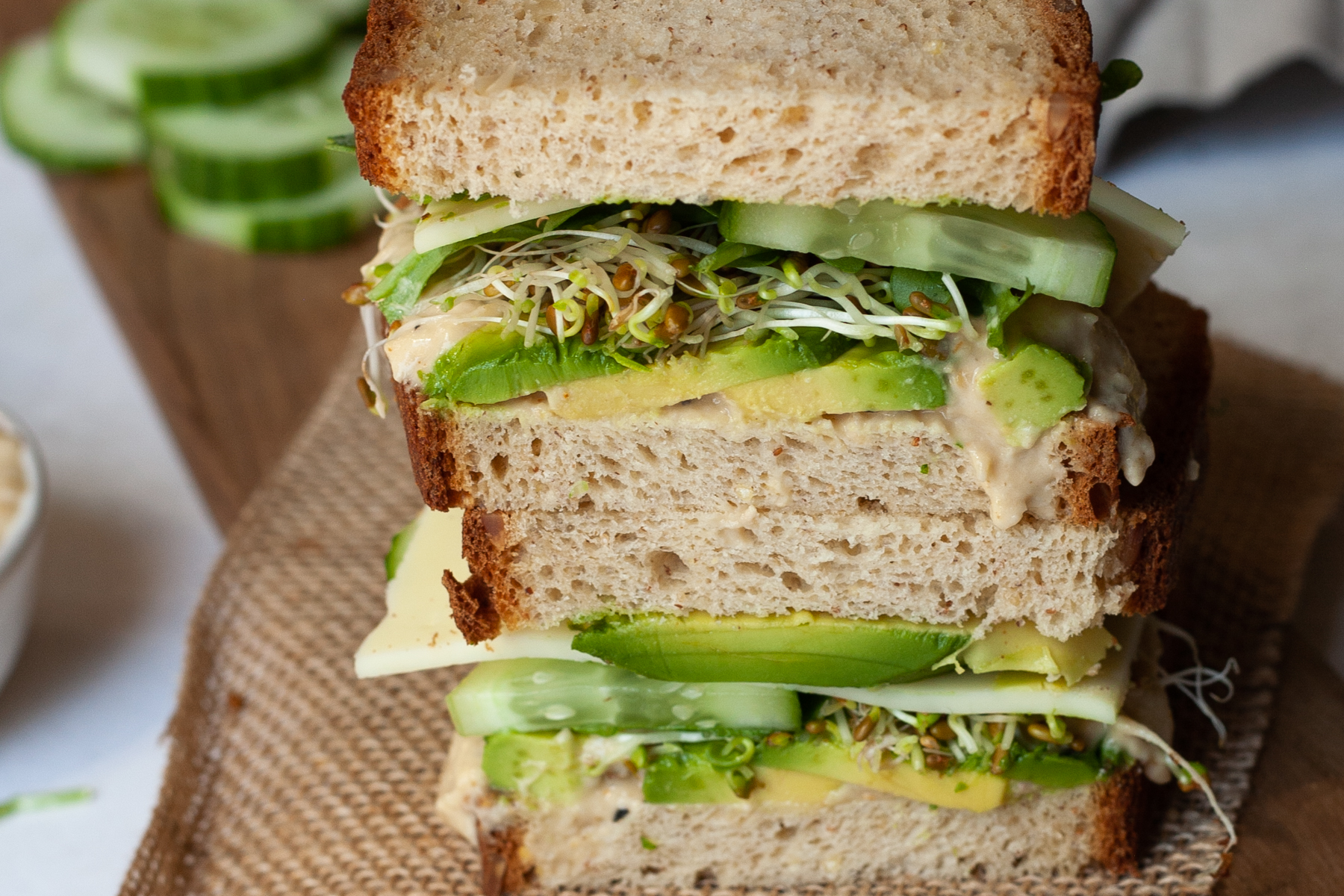
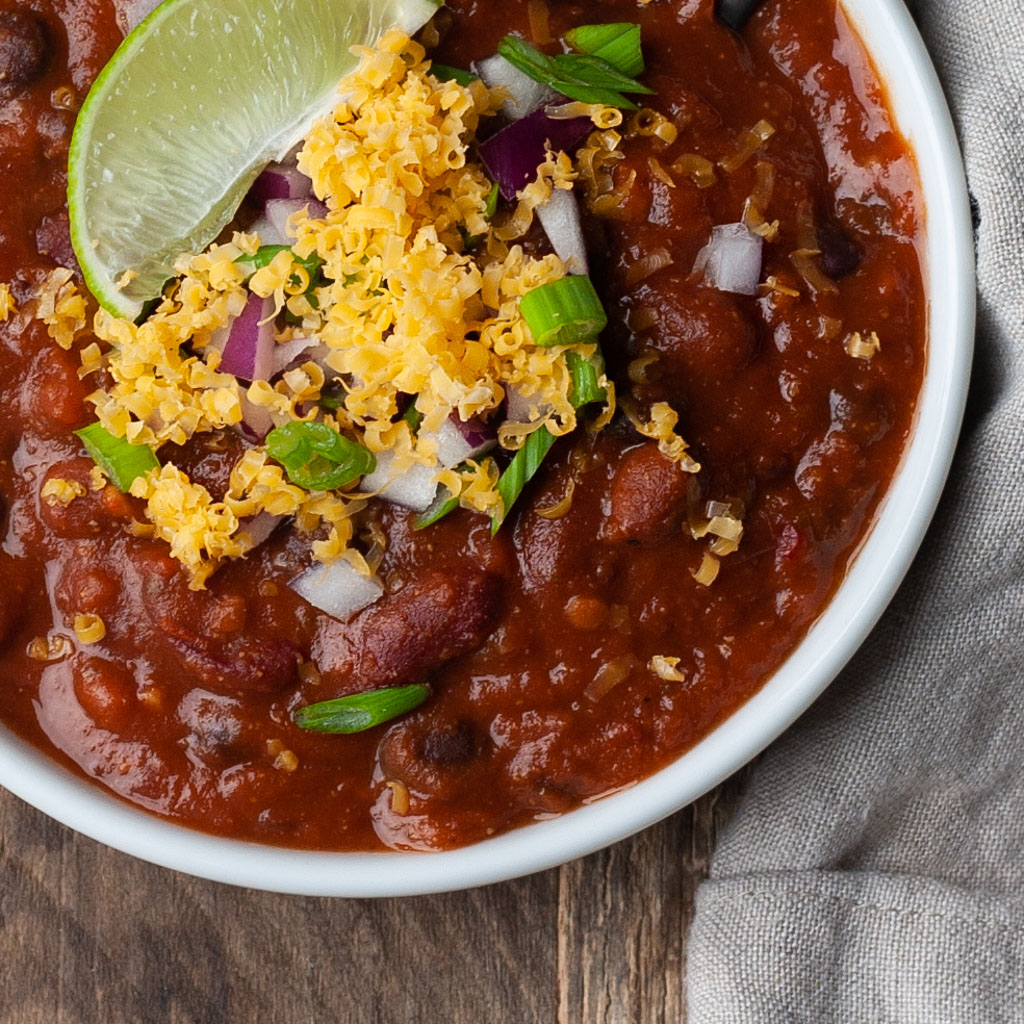
- Greek Yogurt Breakfast Bowls
- Farro Salad
- Cast Iron Skillet Salmon
- Nordic Breakfast Toast
- The Ultimate Green Veggie Sandwich
- Easy Bean Salad
- Ridiculously Easy Meatless Chili Recipe
Other Lifestyle Factors to Reduce Risk of Heart Disease
Since health and wellness is multi-faceted, we can’t just eat well and expect to be “healthy”. In addition to the suggestions above, the following lifestyle changes can also help reduce cholesterol –
- Be physically active
- Stop smoking
- If you drink alcohol, do so in moderation

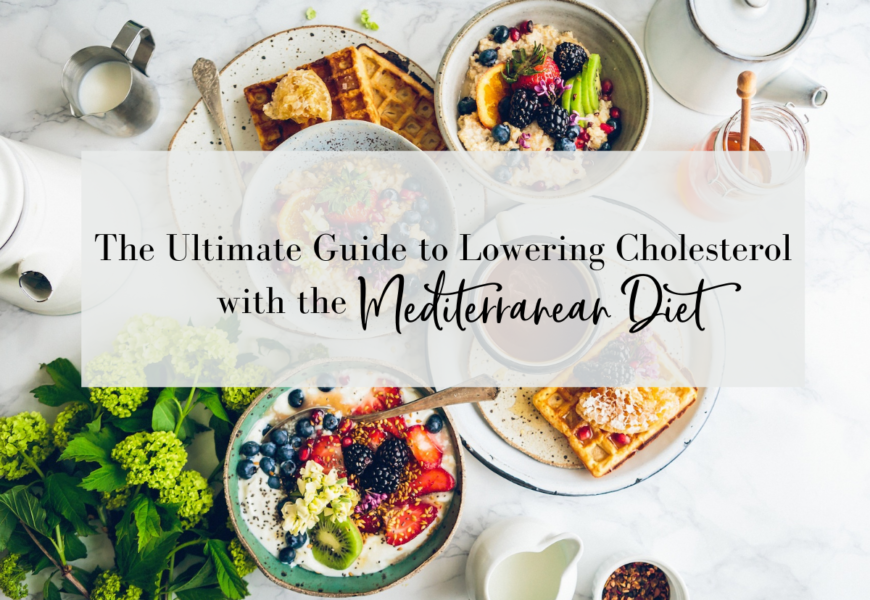

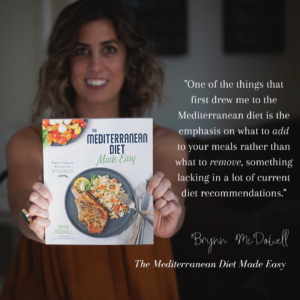

[…] Source link […]